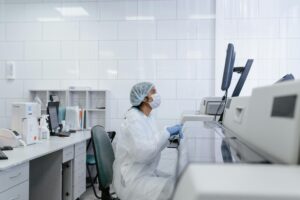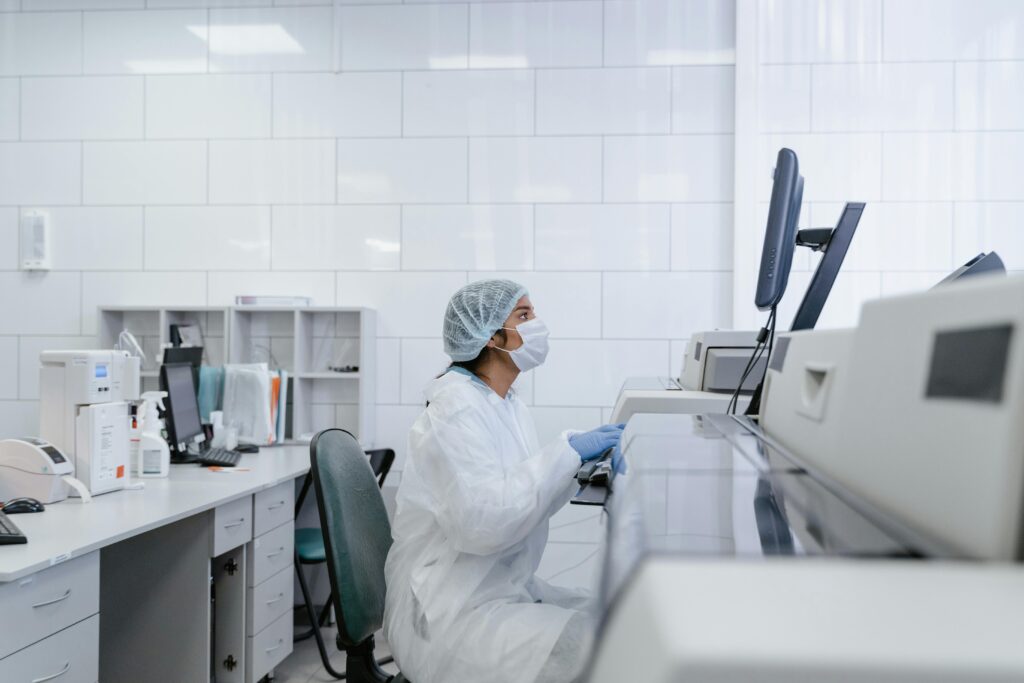Introduction
Technology innovations have been a critical factor in changing medical treatments lately, improving patient care on large scale. Modern technology has changed the way diseases are diagnosed, controlled and treated due to advanced imaging technologies vast in use today as well as cutting-edge surgical techniques. This article examines some of the technologies that are helping medical treatments better work, scale to larger number s of individuals and be delivered in a more individualised manner.

Precise, minimally-invasive robotic surgery
One such tremendous innovation is robotic surgery, an astounding technology change in the world surgical practices. Surgeons can use these advanced robotic systems to carry out a wide range of very intricate procedures with an improved degree of accuracy, flexibility and control. Unlike open surgery, with robotic-assisted surgical techniques the OR staff uses minimally invasive procedures designed to cause less trauma and nerve injury but also enable smaller incisions, decreased bleeding during operation and postoperative reduced pain decreasing chances of associated infection risks as well scarring. As a consequence, patients stay in the hospital for fewer days and recover sooner.
The da Vinci Surgical System is the market leader in robotic systems used for minimally invasive surgery, with applications ranging from urology and gynaecology to cardiac and general surgery. It offers a 3D-HD view of the surgical field, and provides depth perception to make key portions of each case more precise. This level of precision is most helpful in procedures that require high accuracy, like cancer surgeries where the surgeon has to remove tumours without harming surrounding health tissue.
There is increasing robotic technology in surgery. 1 Robotic exoskeletons, for instance, have been used in rehabilitation to assist patients regaining mobility after a stroke or spinal cord injury. With all devices the movements of the patient is possible and thus it performs better as an exercise tool for strength gains, improvement in coordination.
Imaging Technologies: Improving the Diagnosis and Planning of Treatment
Advancements in imaging technologies means that the images available today are far more detailed and helpful to diagnosis. Non-invasive methods include imaging of the body for example, with Magnetic Resonance Imaging (MRI) technology as another Medical Imagery means, CT Scan and Positron Emission Tomography scans., which help to visualise internal structural changes so that abnormality screening is possible in patients prior than invasive intervention are used.
For example, MRI technology uses powerful magnets and radio waves to produce images of organs and tissues. This dedicated technology is employed when imaging the brain, spine, joints as well as soft tissues. The rich detail produced by MRI scans permits a quick diagnosis of issues like tumours, to Multiple sclerosis and Spinal Cord Injury; canny treatment spares more lives as such.
CT scans use a series of X-ray images taken from different angles and then combines them to make cross-sectional views of bones, blood vessels, soft tissues. They are frequently employed for rapid evaluation of trauma injuries in emergency situations, mostly those involving the head and chest or abdomen. In oncology, PET scans are frequently employed for both locating specific cancerous cells and assessing patient response to treatment.
Treatment: Precision Therapy Radiation
Radiation therapy radiation treatment high-energy rays kill cancer cells shrink tumours. Radiation therapy has been made more precise and efficient through technological advances, which have limited the exposure of healthy surrounding tissues to radiation. One example of this would be intensity modulated radiation therapy (IMRT), a technology which enables physicians to better direct the intensity of each beam and thus more accurate target tumours.
Stereo tactic radiosurgery (SRS): A non-invasive treatment in which a high dose of radiation is directed to an exact target with sub millimetre accuracy. In the case of malignant and benign tumours, SRS is generally used to manage brain lesions less than 3 cm in size as well as spine or extra-cranial tissue. This technology is very accurate and hence reduces the chances of side effects, help improve treatment results.
A medical community of advanced radiation treatment is called proton therapy where protons are used instead of X-rays to treat cancer The special physical characteristics of protons make it possible to deliver higher doses of radiation specifically to the tumour, with an ultimate objective in mind: exposure is minimised for surrounding healthy tissues. Proton therapy, in particular, is very good at treating cancers of the brain or eyes and spinal cord where standard radiation could spare a significant amount of damage.
Battling Diseases At The Root: Gene Therapy
Gene therapy is an experimental treatment method that involves replacing and modifying defective genes in order to prevent or cure disease. The technology has potential applications in a variety of issues related to genetics, such as cystic fibrosis; muscular dystrophy and several types of cancer. Gene therapy, on an other hand may correct the actual genetic illnesses and in reality will last forever.
Gene therapy is technical and requires genetically content to be modified accurately, recent gene-editing technologies like CRISPR-Cas9 have cheaper it more precise. CRISPR-Cas9 is a powerful tool that scientists can use to edit the sequence of DNA within cells, leading them toward some very important medical applications in things like disease correction by manipulating genetic mutations. The technology is currently being explored in clinical trials for multiple diseases, including sickle cell anaemia and some inherited forms of blindness.
Though gene therapy is nascent, it boasts of an epic discovery in the field of medicine. As the knowledge of genes and research continue to expand gene therapy may not be a pipe dream, but an approved treatment option in many inherited disorders including genetic based disease states that we all once deemed unfix able.
Treatment Planning and AI
Introduction Artificial Intelligence (AI) slowly creeps into healthcare as a means to support treatment planning and management. Through the processing of big data, such as electronic health records, imaging studies and genetic information—AI algorithms can find patterns that predict outcomes. This leads to personalised treatment plans which are specific the individual features of each tumour.
For instance, AI is enabling personalised cancer treatment via the development of individualised care plans against a patient’s tumour root mutations in oncology. For example, AI can use the data of thousands patients suffering cancer to find out which treatment is most effective in a similar type of patient and predict how will those other patients respond with this therapy. Such a degree of personalization increases the effectiveness of treatment as well as reduces occurrence severity.
AI is also used for checking the process and progress of patients who are suffering from different chronic conditions. AI-based data-analytics tools can identify trends in patient deterioration from wearables measuring heart activity or glucose levels, and act on that information to detect early signs of a potential cardiac event or diabetes emergency well before it becomes critical. These enable healthcare providers to provide proactive and personalized care, which ultimately benefits patients.
Pain Relief and Rehabilitation with Virtual Reality
Virtual Reality (VR) This is the changing technology being use as pain therapy and rehabilitation. VR uses powerful, interactive computer-generated worlds to provide a distraction from pain and anxiety. Research have shown that VR has a strong analgesic effect in patients who undergo painful procedures or suffer from long- term pain conditions.
VR is now being utilised in rehabilitation to construct interactive, engaging environments and increase compliance for patients performing physical therapy exercises. A stroke patient can for instance, practice movements in VR and exercise muscle groups with a lot of fun surrounded by various virtual landscapes. Studies have purported that the utilisation of VR in rehabilitation can enhance patient interaction, and outcomes making therapy more efficient.
Conclusion
Slowly, but steadily technology is supplementing medical treatment and hastening to make it precise, effective as well personalised. From robotic surgery and state-of-the-art imaging to gene therapy and machine learning, these breakthroughs are revolutionising patient care as well as outcomes. Given this, the technology landscape is likely to change year over year and usher new opportunities that will revolutionise medical practices of tomorrow in terms of health improvements leading towards better quality life for patients across globe.



